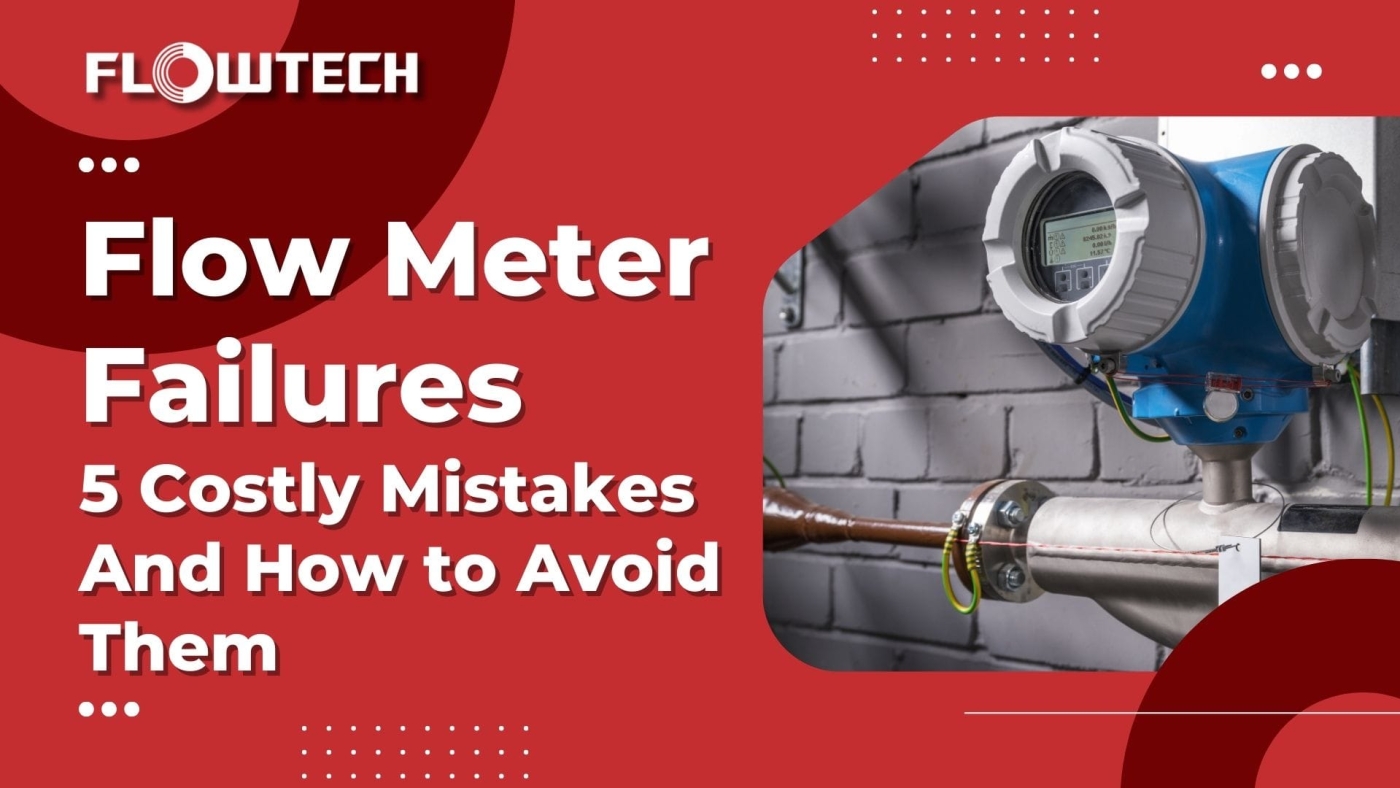Table of Contents
- 1 5 Most Common Flow Meter Failures
- 2 How to Catch Problems Early
- 3 When to Call in the Pros
- 4 The Bottom Line
Nothing brings production to a screeching halt faster than a Flow Meter Failures. I’ve seen it happen too many times – a $20,000 meter failing after just six months because someone overlooked a critical detail. The worst part? Most of these failures are completely preventable.
In this guide, I’ll walk you through the five most common (and costly) flow meter mistakes we see across industries, along with practical solutions to avoid them. These insights come from decades of combined field experience – consider it your cheat sheet for keeping your flow meters running smoothly.
5 Most Common Flow Meter Failures
Mistake #1: Ignoring Fluid Compatibility
We once had a client insist on using a standard stainless steel meter for hydrochloric acid. “It’s just a weak solution,” they said. Three weeks later, we were replacing a corroded, leaking mess.
The Fix:
- Always verify chemical compatibility using charts like ASTM G31
- When in doubt, go with PTFE-lined or Hastelloy meters
- Consider future process changes – will your fluid composition change?
Mistake #2: Improper Installation
A food plant installed a magnetic flow meter upside down to “save space.” The air bubbles trapped in the sensor caused erratic readings for months before they figured it out.
The Fix:
- Follow manufacturer specs for orientation (vertical/horizontal)
- Ensure proper upstream/downstream straight pipe runs (usually 10D/5D)
- Use trained technicians – not “whoever’s available”
Mistake #3: Skipping Regular Calibration
A chemical dosing system was consistently under-dosing by 12% because no one calibrated the flow meter in 3 years. The cost? $80,000 in wasted product before they caught it.
The Fix:
- Create a calibration schedule based on:
- Meter type (Coriolis vs. turbine)
- Fluid characteristics (clean vs. abrasive)
- Criticality of measurement
- Keep detailed calibration records
- Consider automated calibration reminders
Mistake #4: Wrong Meter for the Application
A dairy tried using a turbine meter for yogurt. The result? Constant clogging and a meter that needed weekly cleaning.
The Fix:
Match the meter to your specific needs:
- High viscosity fluids? Positive displacement
- Slurries? Magnetic or ultrasonic
- Low flow rates? Mass flow meters
Mistake #5: Neglecting Environmental Factors
An outdoor flow meter in Texas failed because no one considered the 120°F summer heat exceeded its rating.
The Fix:
Account for:
- Temperature extremes
- Humidity/moisture
- Vibration
- Potential for physical damage
How to Catch Problems Early
Implement these simple checks to avoid catastrophic failures:
- Weekly: Visual inspection for leaks/corrosion
- Monthly: Verify zero readings
- Quarterly: Compare with secondary measurement
- Annually: Full diagnostic check
When to Call in the Pros
While many issues can be handled in-house, call a specialist if:
- Readings fluctuate unpredictably
- You see physical damage to sensors
- Performance degrades suddenly
- You’re making process changes
The Hidden Costs of Flow Meter Failures
Most operators only consider the immediate repair costs when a flow meter fails. But the true impact is often 3-4 times higher when you factor in:
- Production downtime (5,000−50,000/hour in some industries)
- Wasted product (Inaccurate measurements mean lost revenue)
- Emergency service calls (After-hours rates apply)
- Regulatory fines (For non-compliant measurements)
Real-world example: A pharmaceutical plant’s failed flow meter caused a batch worth $250,000 to be scrapped when dosing accuracy drifted by just 3%.
Flow Meter Failure Warning Signs You Might Miss
Don’t wait for complete failure. Watch for these subtle red flags:
- Gradual Accuracy Drift
- Compare readings with manual measurements monthly
- 2% deviation warrants investigation
- Increased Noise/Instability
- Erratic signals often precede total failure
- Check grounding and power supply first
- Physical Symptoms
- Unusual vibrations
- New sounds (grinding, whistling)
- Visible wear on moving parts
Industry-Specific Flow Meter Failure Patterns
Water Treatment Plants
- Common failure: Electrode fouling in mag meters
- Solution: Automatic cleaning systems + monthly inspections
Oil & Gas
- Common failure: Plugged impulse lines in DP meters
- Solution: Chemical injection + heat tracing
Food Production
- Common failure: Seal degradation in sanitary meters
- Solution: Quarterly gasket replacement program
Preventative Maintenance Checklist
Extend your flow meter’s lifespan with these proactive steps:
Daily/Weekly
✔ Verify zero reading stability
✔ Check for leaks at connections
Monthly
✔ Clean electrodes/sensors
✔ Inspect for corrosion
✔ Validate against secondary measurement
Annual
✔ Full diagnostic test
✔ O-ring/seal replacement
✔ Firmware updates (smart meters)
When to Repair vs. Replace
Repair if:
- Cost <40% of new unit price
- Meter is <5 years old
- OEM parts are available
Replace if:
- Multiple components failed
- Technology is obsolete
- New requirements emerged (e.g., digital outputs)
Pro Tip: Always get a lifecycle cost analysis before deciding – a “cheap repair” might cost more long-term.
Your Flow Meter Failure Prevention Plan
- Document Everything
- Failure history
- Maintenance logs
- Calibration records
- Train Your Team
- Basic troubleshooting
- Early warning signs
- Proper cleaning techniques
- Build Supplier Relationships
- Priority support contracts
- On-site training options
- Spare parts inventory
The Bottom Line
Remember: Flow meter failures aren’t just about broken equipment—they’re about broken processes. By implementing these strategies, you’re not just fixing meters; you’re building a more reliable, profitable operation.
Need help diagnosing a stubborn flow meter issue? Our team has seen it all – reach out for a no-obligation consultation. Inquire Now!

